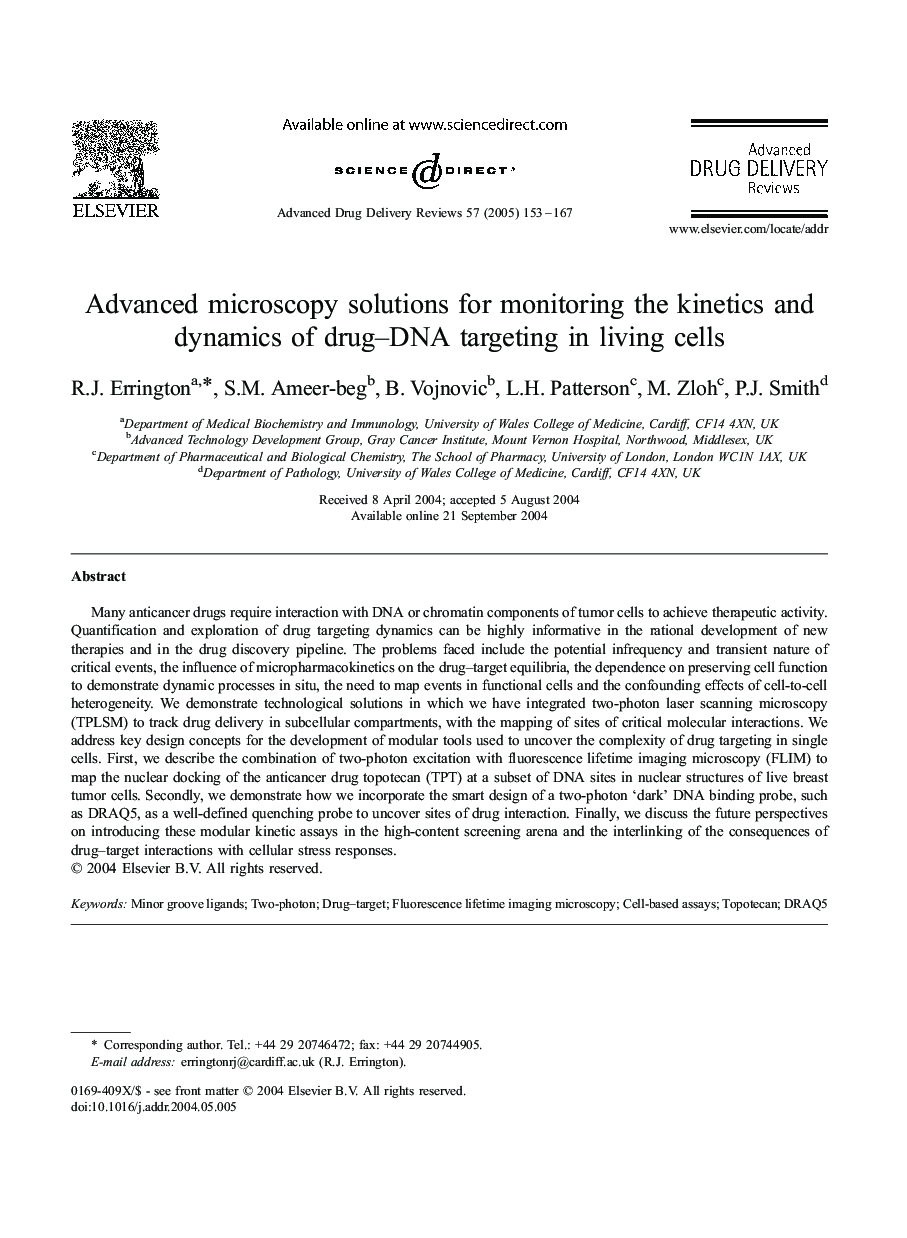| Article ID | Journal | Published Year | Pages | File Type |
|---|---|---|---|---|
| 10883864 | Advanced Drug Delivery Reviews | 2005 | 15 Pages |
Abstract
Many anticancer drugs require interaction with DNA or chromatin components of tumor cells to achieve therapeutic activity. Quantification and exploration of drug targeting dynamics can be highly informative in the rational development of new therapies and in the drug discovery pipeline. The problems faced include the potential infrequency and transient nature of critical events, the influence of micropharmacokinetics on the drug-target equilibria, the dependence on preserving cell function to demonstrate dynamic processes in situ, the need to map events in functional cells and the confounding effects of cell-to-cell heterogeneity. We demonstrate technological solutions in which we have integrated two-photon laser scanning microscopy (TPLSM) to track drug delivery in subcellular compartments, with the mapping of sites of critical molecular interactions. We address key design concepts for the development of modular tools used to uncover the complexity of drug targeting in single cells. First, we describe the combination of two-photon excitation with fluorescence lifetime imaging microscopy (FLIM) to map the nuclear docking of the anticancer drug topotecan (TPT) at a subset of DNA sites in nuclear structures of live breast tumor cells. Secondly, we demonstrate how we incorporate the smart design of a two-photon 'dark' DNA binding probe, such as DRAQ5, as a well-defined quenching probe to uncover sites of drug interaction. Finally, we discuss the future perspectives on introducing these modular kinetic assays in the high-content screening arena and the interlinking of the consequences of drug-target interactions with cellular stress responses.
Related Topics
Life Sciences
Biochemistry, Genetics and Molecular Biology
Biotechnology
Authors
R.J. Errington, S.M. Ameer-beg, B. Vojnovic, L.H. Patterson, M. Zloh, P.J. Smith,
